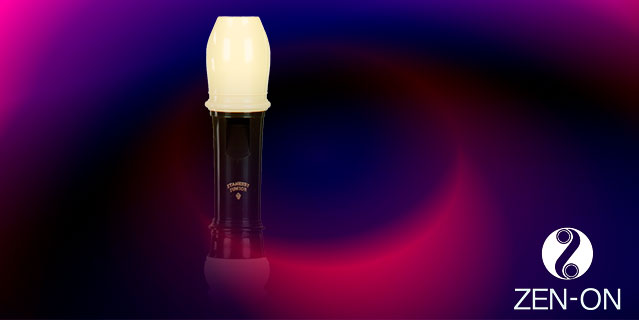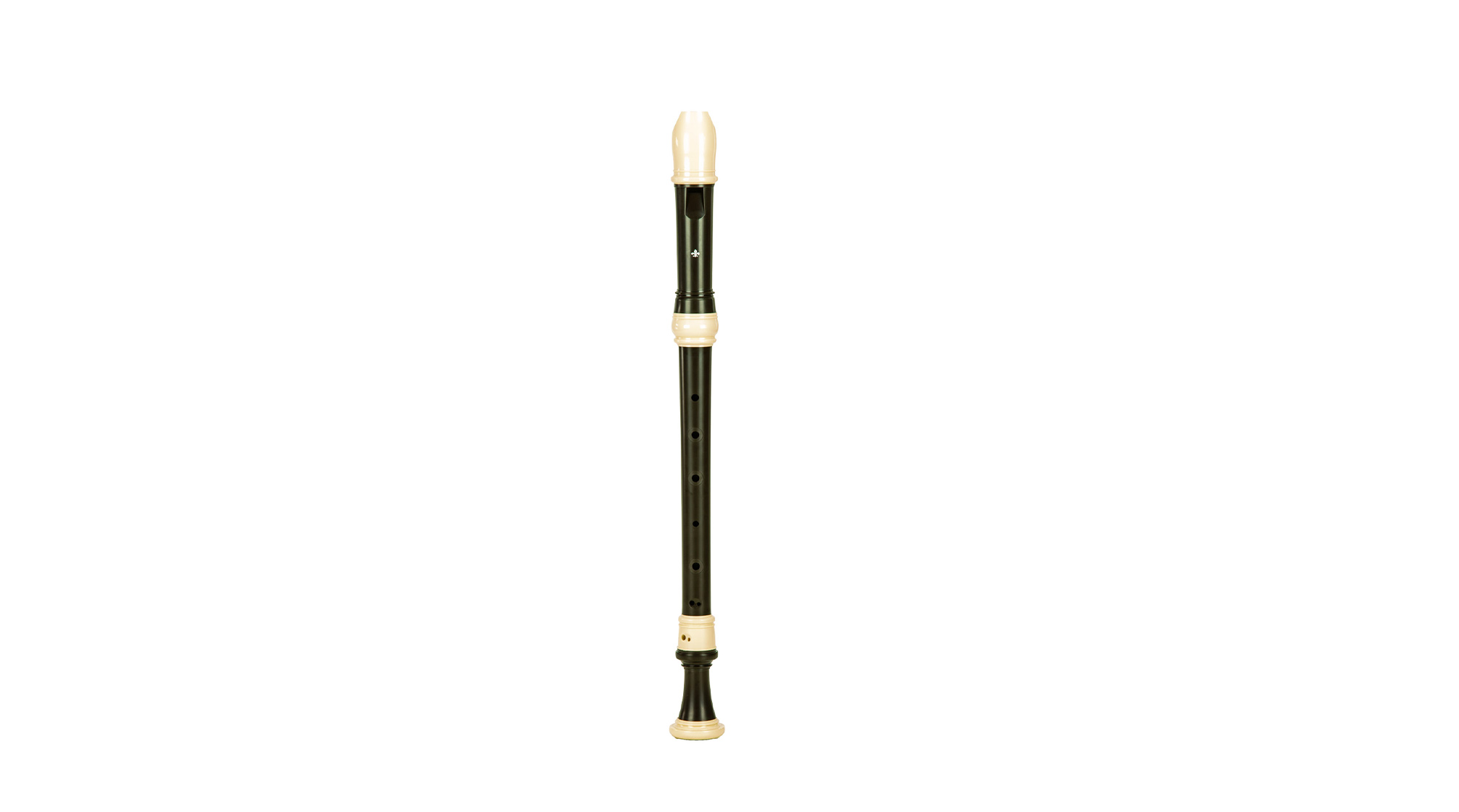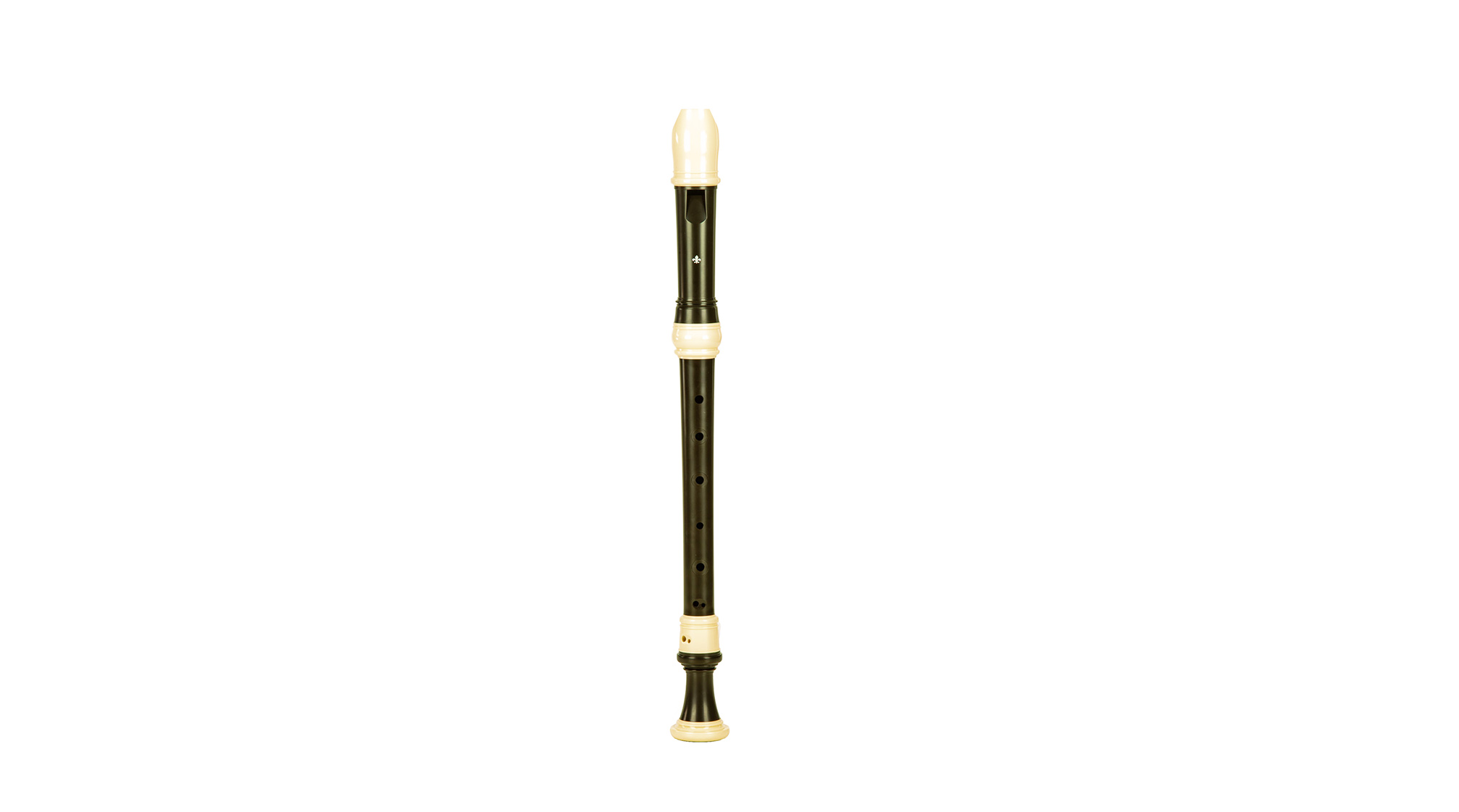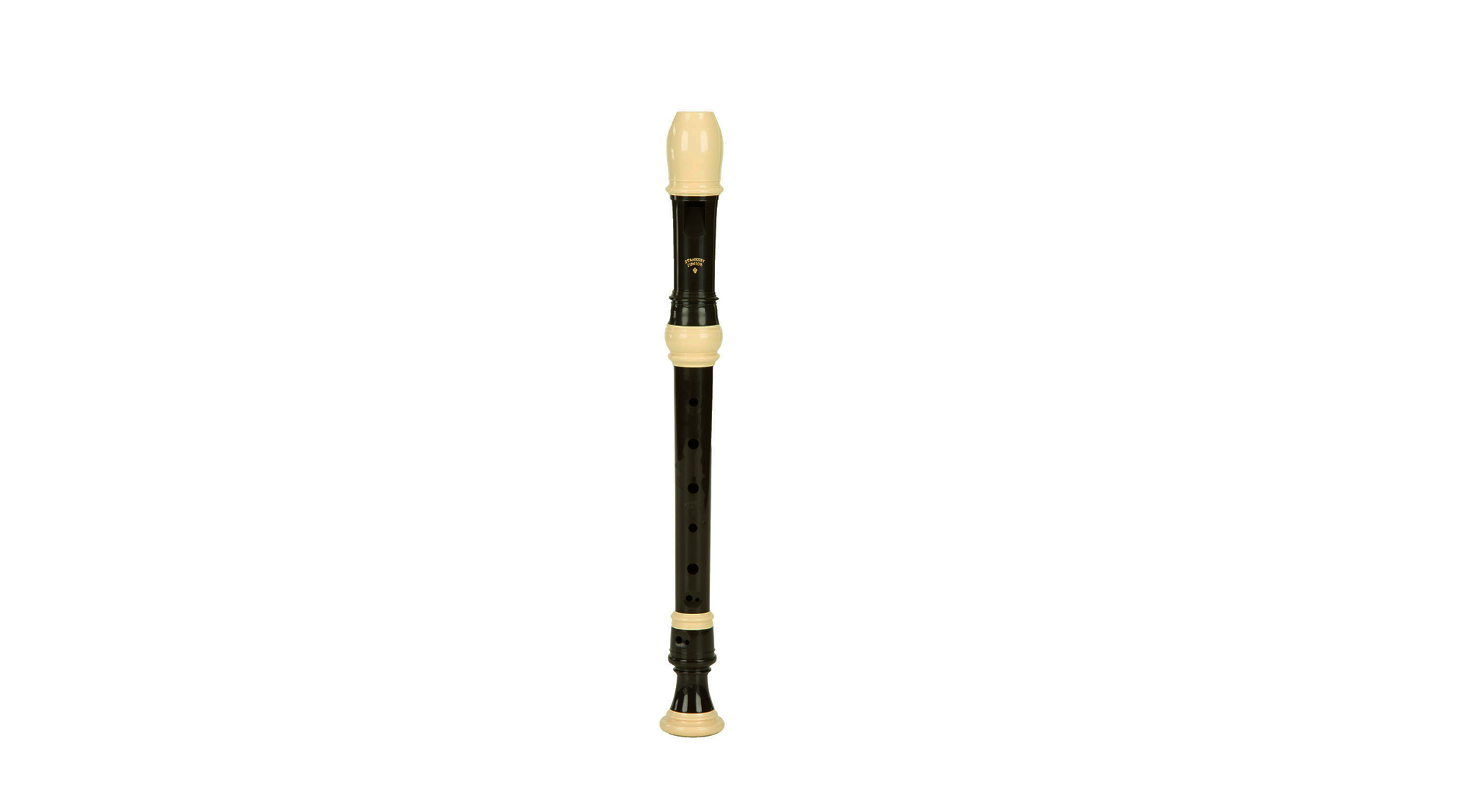
The Japanese brand Zen-On produces not only recorder series made of wood, but also instruments made by injection molding.
Especially interesting is the low-priced alto recorder in 415 Hz which we offer in our assortment.
Filter
–
Zen-On F-Alto, Plastic
Baroque Doublehole, Item: G-1A-415-ZEN
Natural, 415 Hz
This with the article number: G-1A-415-ZEN manufactured by Zen-On is an instrument, that in daily use constantly can give fun.
This circumstance is due to the special marriage of the marvelous instrument model in fusion with the sound of the material Plastic.
The material produces in this instrument a conspicuous characteristic, by its extraordinary preferences. The qualities can be characterized so, whereas it is in the nature of things that sounds can always be described very inadequately with words. Therefore the material typical sound of recorders is perceived and described by each person in details somewhat uniquely. We use these words: ABS-plastic (Acrylnitril-butadien-styrol): Clear sound, rich in overtones. Sometimes a bit crisper with smaller instruments
The bore
The geometry of the inner bore of the instrument is light cylindroconical. This kind of bore course grants this model its typical sound.
In principle, models with wider bore sound warmer, fuller, more fundamental and thus more suitable for ensembles than recorders with narrower inner bore.
For which music can this instrument best be used for?
Plastic is particularly for woodwinds used for: Focus on baroque music, other styles possible.
To whom is this recorder addressed?
For the above facts it follows that instruments made of Plastic are especially for ambitious amateurs and advanced players recommendable. An additional rule is that a valuable instrument makes the learning as easier apparently low-cost offer.
The windway of a recorder
The windway is the area in the instrument headpiece where the breath is formed into a sheet of air. This air leaf is the basis of the sound production.
In interaction with the labium, the air stream is very quickly alternately directed inwards and outwards. This swinging flow stimulates the air in the body of the instrument. And this is the origin of the recorder sound.
This is the reason why the labium must not be damaged in any case. The same rule applies to the windway.
Otherwise suffer the variability of musical expressiveness of the instrument.
The windway of the model G-1A-415-ZEN of Zen-On has this windway shape: Curved, conical.
Conical shaped windways accelerate the air leaf more than cylindrical windways.
Never underestimate windway and labium! Their meaning for the instrument is uncommon complex in their geometric shaping.
Even minor damages here often lead to a total loss!
Fingerings
The recorder Zen-On G-1A-415-ZEN is manufactured in the version: Baroque Doublehole .
Construction
The constructional design in terms of multipartness a woodwind instrument influences extraordinarily the way the recorder in use on the one hand is uncomplicated to handle in terms of easy gripping and on the other hand for the safe transport.
This is a point that should not be underestimated, especially when transporting larger (and sometimes multiple) instruments.
{Experienced ensemble players can tell you a thing or two about this. Or ask large playing circles.
Leaders of recorder orchestras know how useful good and compact recorder bags are.
Packaging and accessories
The recorder is delivered as standard with: Bag
The following accessories included:
Advice before getting a new recorder
Ask acquaintances!
The search for your instrument should never be influenced by "generally accepted" rules.
Get your own realizations after testing an instrument. Don't let prevailing opinions.
Do not let others stop you from testing of an yet unknown instrument.
Your taste is as unique as you are.
Therefore, only you can decide which construction will to "make music endlessly".
Our recommendation is therefore: Try different concepts!
After that you will be amazed and can make a safe decision.
Information about instruments with keys
Not always can the tone holes be drilled in the places in the that are easy to grasp with the fingers. Especially with bass recorders sit for acoustic necessities tone holes adequate to reach. On these instruments, by the instrument maker keys are added, which make gripping clearly easier, or possible in the first place.
This allows it to be {pleasant|light|ergonomic|conspicuous|above average| good play even by players with smaller hands.
The instrument G-1A-415-ZEN has the following flaps:
Zen-On F-Alto, Plastic
Baroque Doublehole, Item: G-1A-ZEN
Natural, 442 Hz
This F-Alto with the model number: G-1A-ZEN constructed by Zen-On is a recorder, the in making music always can give fun.
This circumstance is based to a large part on the careful merging of the genius model in fusion with the expression of the material Plastic.
The material makes this instrument a strikingly pleasant characteristic, by its special preferences. The characteristics can described as follows, whereas it is in the nature of things that sounds can always be described very inadequately with words. Therefore the material typical sound of recorders is perceived and described by each person in details a bit uniquely. We say: ABS-plastic (Acrylnitril-butadien-styrol): Clear sound, rich in overtones. Sometimes a bit crisper with smaller instruments
The bore
The course of the inner bore of the recorder is light cylindroconical. This kind of bore course gives the instrument this characteristic tone.
In principle, recorders with wider bore sound warmer, fuller, more fundamental and thus more suitable for ensembles than instruments with narrower inner bore.
For which music can this instrument best be used for?
Plastic is wonderful for instruments used for: Focus on education and school music.
To whom is this recorder addressed?
This means that instruments made of Plastic are especially for ambitious amateurs and advanced players recommendable. An additional valid rule is that a better instrument makes the learning as pleasant than a inferior low-cost bargain.
The windway of the recorder
The windway is the area in the instrument headpiece where the blowing air is formed into a thin sheet of air. This air leaf is the basis of the instruments tone.
In interaction with the labium, the air flow is very quickly alternately directed inwards and outwards. This swinging stream stimulates the air in the bore. And this is the origin of the recorder tone.
This is the reason why the labium must not be damaged in any case. The same rule applies to the windway.
Otherwise suffer the influenceability of the possible sounds of the instrument.
The windway of the instrument G-1A-ZEN of Zen-On has this windway shape: Curved, conical.
Conical shaped windways accelerate the air leaf more than cylindrical windways.
Never violate windway and labium! Their meaning for the function is complex in their geometric shape.
Damages here often lead to a total loss!
Fingerings
The instrument Zen-On G-1A-ZEN is delivered in the version: Baroque Doublehole .
Construction
The method of construction a woodwind instrument influences strongly the way the recorder in daily use on the one hand is uncomplicated to handle in terms of easy assembling and on the other hand for the compact transport.
A point that becomes especially important when larger or multiple instruments have.
{Experienced ensemble players can tell you a thing or two about this. Or ask leaders of recorder ensembles.
Leaders of recorder choirs know how useful good and compact recorder packaging is.
Packaging and accessories
The recorder is offered as standard with: Bag
The matching accessories included:
Advice on the way to new recorders
Inform yourself in detail!
The search for your new instrument should never be influenced by "generally accepted" rules.
Get your own realizations after playing an instrument. Don't let "well-meaning" advice.
Do not let others stop you from trying a unkown recorder model.
Your musical taste is as unique as you are.
Therefore, only you can decide which construction will make.
Our recommendation is therefore: Test new instruments!
After that you will be surprised and can make a safe decision.
Information about instruments with keys
Not always can the tone holes be drilled in places in the that are easy and pleasant to grasp with the fingers. Especially with bass recorders sit for acoustic reasons certain tone holes adequate to reach. On these instruments, keys are added, which make gripping significantly easier, or possible in the first place.
This allows it to be {pleasant|light|ergonomic|conspicuous|above average| good play even by players with smaller hands.
The instrument G-1A-ZEN has the following flaps:
Zen-On Soprano, Plastic
Baroque Doublehole, Item: 150BN-ZEN
Natural, 442 Hz
This instrument with the article number: 150BN-ZEN crafted by Zen-On is a musical tool, that in daily use continues to can make joy.
This characteristic is based to a large part on the considerate combination of the amazing composition in fine tuning with the expression of the material Plastic.
The material produces in this instrument a strikingly pleasant characteristic, by its special preferences. The properties can be described: inadequately with words. Therefore the material typical sound of recorders is perceived and described by each person inthe details somewhat varying. We use these words: ABS-plastic (Acrylnitril-butadien-styrol): Clear sound, rich in overtones. Sometimes a bit crisper with smaller instruments
The bore
The geometry of the inner bore of the recorder is light cylindroconical. This kind of bore shape gives this model its characteristic sound.
In principle, models with wider bore sound warmer, fuller, more fundamental and thus more suitable for ensembles than recorders with narrower scale.
For which music can the recorder best be used for?
Plastic is particularly for woodwinds used for: Focus on education and school music.
To whom is this recorder addressed?
For the above facts it follows that instruments made of Plastic are especially for Students, Professional Players recommendable. An additional important rule is that a valuable instrument makes the interaction as pleasant apparently low-cost offer.
The windway of the recorder
The windway is the area in the recorder head where the breath of the musician is formed into a sheet of air. This air leaf is of one of the most important elements of the recorders sound.
In interaction with the labium, the air stream is very quickly alternately directed inwards and outwards. This swinging flow stimulates the air in the bore. This is the origin of the recorder sound.
This is the reason why the labium must never be damaged. The same applies to the windway.
Otherwise suffer the sound and response of the instrument.
The windway of the recorder 150BN-ZEN of Zen-On has this windway shape: Curved, conical.
Conical windways accelerate breathing air more than cylindrical shaped windways.
Never violate windway and labium! Their meaning for the recorder is very complex in their geometric shape.
Damages here often lead to a total loss!
Fingerings
The instrument Zen-On 150BN-ZEN is delivered in the following version: Baroque Doublehole .
Construction
The number of parts a woodwind instrument influences extraordinarily the way with which the recorder in daily use on the one hand is simple to handle in terms of easy assembling and on the other hand for the convenient transport.
A point that becomes especially important when larger or multiple instruments to.
{Experienced ensemble players can tell you a thing or two about this. Or ask leaders of recorder ensembles.
Leaders of recorder orchestras know how useful good and compact recorder bags are.
Packaging and accessories
The recorder is delivered as standard with: Bag
The useful accessories included:
Notes before getting a new recorder
Ask acquaintances!
The search for your new recorder should in no case be influenced by the opinions of "self-proclaimed experts".
Get your own realizations after testing a recorder. Don't let "well-meaning" advice.
Do not let others stop you from playing of an yet unknown instrument.
Your taste is as unique as you are.
Therefore, only you can decide which instrument concept will you.
Our recommendation is therefore: Test new designs!
After that you will be surprised and can make a safe decision.
Information about instruments with keys
Not always can the tone holes be placed in places in the instrument that are pleasant to grasp with the fingers. Especially with larger instruments sit for acoustic reasons some tone holes adequate to reach. On such instruments, by the instrument maker keys are added, which make gripping expressed easier, or possible in the first place.
This allows it to be {pleasant|light|ergonomic|conspicuous|above average| good grip even by players with smaller hands.
The instrument 150BN-ZEN has the following flaps:




